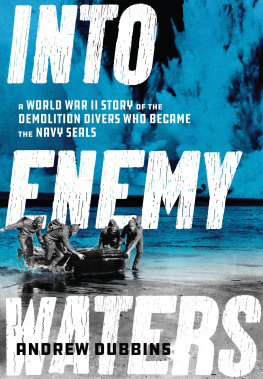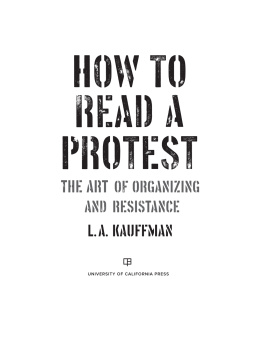AMERICAS FIRST FROGMAN
This book has been brought to publication with the generous assistance of Marguerite and Gerry Lenfest.

Portrait by Alice V. Knight
AMERICAS
FIRST
FROGMAN
The Draper Kauffman Story
Elizabeth K. Bush
NAVAL INSTITUTE PRESS
Annapolis, Maryland
This book has been brought to publication by the generous assistance of
Marguerite and Gerry Lenfest.
First Naval Institute Press paperback edition 2012.
Naval Institute Press
291 Wood Road
Annapolis, MD 21402
ISBN 978-1-61251-298-3
2004 by Elizabeth K. Bush
All rights reserved. No part of this book may be reproduced or utilized
in any form or by any means, electronic or mechanical, including
photocopying and recording, or by any information storage and
retrieval system, without permission in writing from the publisher.
Library of Congress Cataloging-in-Publication Data
Bush, Elizabeth K., 1922
Americas first frogman : the Draper Kauffman story / Elizabeth K. Bush.
p. cm.
1. Kauffman, Draper. 2. AdmiralsUnited StatesBiography. 3. United States. Navy.
Underwater Demolition TeamsHistory. 4. World War, 19391945Regimental
historiesUnited States. 5. World War, 19391945Naval operations, American. 6.
United States. NavyOfficersBiography. I. Title.
V63.K38B87 2004
940.545973092dc22
2004014368
First Printing.
Contents
This book is dedicated with love to my husband, Pres, whom Draper so greatly admired, and without whose encouragement this story would never have been written.
E. K. B.
THIS BOOK IS ABOUT a true American hero. It is about duty, honor, and country. It is about service and sacrifice.
When Adm. Draper Kauffmans sister, my own sister-in-law, asked me to write this brief introduction, I set aside my policy of not writing forewords or blurbs for books. I did this because of my great respect for Adm. Draper Kauffman, about whom this book is written.
In the summer of 1944 my torpedo bomber squadron, VT-51, based aboard the carrier USS San Jacinto covered some of the landings on Guam and Saipan. I remember vividly the sight of those Marines going ashore in the face of severe enemy fire. I remember thinking rather selfishly, Thank God I am a pilot, not one of those Marines going in there to face hell. In an hour Ill be back aboard ship in clean clothes, in great quarters, and with great food, and these guys will be trying to advance one hundred yards in the face of enemy fire.
What this nineteen-year-old navy pilot didnt know at that time was what had transpired before the Marines landed. I knew nothing about the frogmen, nothing about those courageous underwater men who bravely paved the way for the Marines.
I didnt realize that Draper Kauffman, whom I barely knew then, was not only a pioneer in the field but also a fearless leader who put his own life on the line right next to the men whom he had trained and whom he led into harms way.
This book tells of the heroism of the underwater demolition teams. It also tells about Drapers service in France in 1940, his being taken prisoner by the Germans, and of being part of a truly brave group of men in the British navy in 194041 who rendered safe the German time bombs and mines.
In 1941 he transferred to the U.S. Navy, where he developed a bomb disposal team, joining again with selfless, courageous volunteers in this still-vital work.
In telling us about her brothers life of service and dedication, Beth Bush also defines sacrifice and heroism.
The question is rhetorically asked, Where do we find such men? My answer is that when a crisis arises, the United States will always find such men. We found them in Desert Storm, in Vietnam, and in Korea. Surely we found them in World War II, and now we find them in Afghanistan and Iraq. Draper Kauffman is one such man who brought honor and credit to the uniform he wore.
Day in and day out, he laid his life on the line for his country. He was a true leader. He always put his men first. He went in early and often. He led by his own courage. Draper Kauffman, proud officer in the U.S. Navy, defines for me what service to country is all about.
I was very proud to have been a lowly lieutenant (jg) in the navy during WWII. There I learned firsthand about service to country. And I learned a lot about sacrifice and patriotism.
Much later, as president of the United States, I was proud to have been the commander in chief of our armed forces. In both these incarnations, my appreciation for those who served was honed, my appreciation for real heroes sharpened to a fine edge. My respect for the U.S. military knows no bounds.
Adm. Draper Kauffmans commitment to service and his exemplary record have reinforced my views on duty, honor, and country.
Who says there are no American heroes? Draper Kauffman was a true hero. This book tells us why.
George H. W. Bush
IN JULY 1942 Time magazine ran an article about an American who had joined the British navy. It told how, in November 1941, in the lobby of Londons Savoy Hotel, some reporters got to chatting with a fellow American who, they noticed, was wearing a uniform of the Royal Navy. The reporters wanted to know why. The American said he had been in the Royal Navy exactly one year and was going stateside for a months leave the next day.
Im supposed to be a naval officer, the young man said, but they wont let me go to sea! He wore spectacles, and after a pause he added, Bum eyes. They threw me out of the U.S. Navy. His voice was bitter. Theyve got me on shore duty, nursing those goddam land mines. Nothing like what those pilots do, he mourned.
The reporters looked at one another, silent. They knew that land mine duty in Britain took at least as much courage as being a fighter pilot.
His name was Draper Kauffman, he said, and his father was Rear Adm. James L. Kauffman, then commander of U.S. Navy defenses in the Gulf of Mexico.
Fat lot of good that connection did me, said Lieutenant Kauffman. Eyes went bad on me just after I finished at Annapolis.
The article concluded: While Lieut. Kauffman, R.N., was on leave in the U.S., the Japanese attacked Pearl Harbor. The U.S. Navy then found Draper Kauffmans eyes and experience good enough for war. Last week Secretary Knox awarded Lieut. Kauffman, [USNR], the Navy Cross for exceptional heroism. His deed: unloading and examining a live, 500-lb., Japanese bomb, which failed to explode when it hit an Army field in Hawaii, last Dec. 7.
Draper Laurence Kauffman was my brother, and that Navy Cross was just one of a series of distinctions that would make his unique career. This is the story of Draper Kauffman, who graduated from the Naval Academy in 1933 but failed to gain a commission on account of defective eyesight, and who, despite this inauspicious beginning, went on to become a hero in World War II, an admiral, andironicallysuperintendent of the U.S. Naval Academy. It is the record of a naval career that was not only successful but also, in the annals of the U.S. Navy, surely one of the most unusual.
After being forced out of the navy in 1933, Draper was employed by a New York-based steamship company, the U.S. Lines, which sent him to Germany at the very time Hitler was hammering into shape that countrys collective mind-set. Drapers deep-seated reaction to events unfolding in Nazi Germany would shape the course of his life for years to come. It would compel him to travel to wartime France, where he served in the American Volunteer Ambulance Corps and was taken prisoner by the Germans; he became a British naval officer and eventually, when the United States had its rude awakening at Pearl Harbor, found himself back in the fold of the U.S. Navy. Drapers subsequent career setting up the navys first bomb disposal and underwater demolition schools, and later serving as a UDT (underwater demolition team) commander in the Pacific, is a story of great leadership and undying determination.











